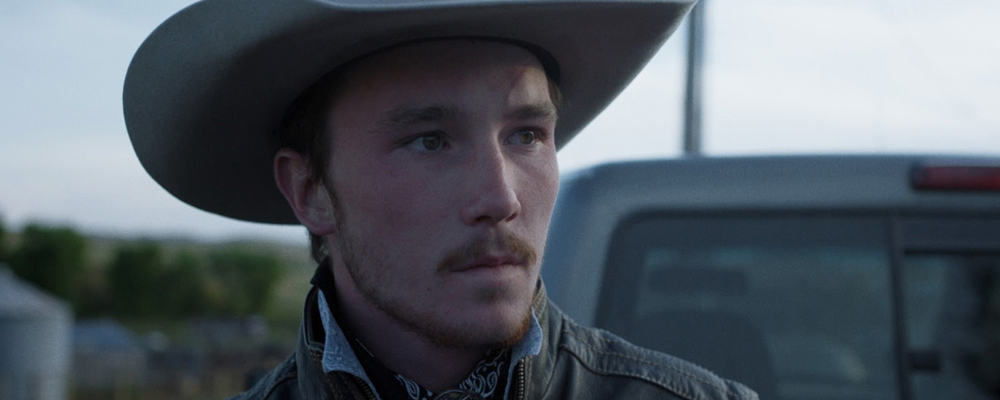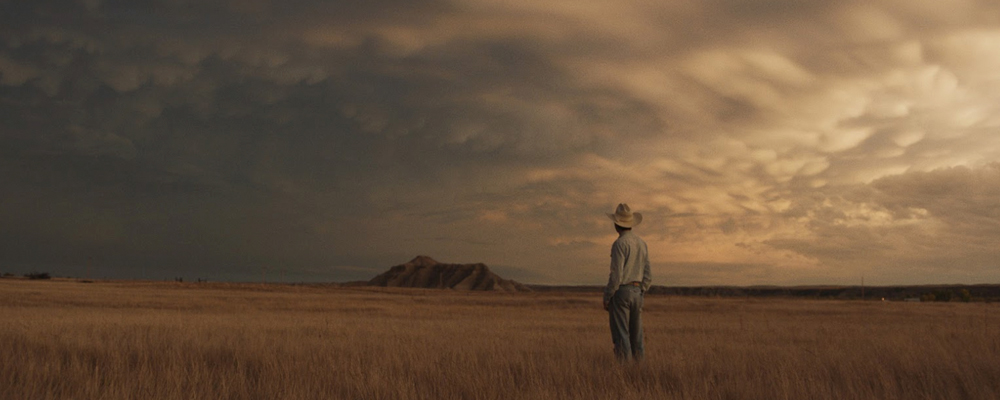‘The Rider’ Director Chloe Zhao and Rodeo Cowboy Brady Jandreau Talk Capturing Real Life in the Rural American West
Michael Amundsen
“I want to be clear,” shared Zhao. “The film is fictional. It’s a story that’s inspired by his injury and the recovery from that injury and there are elements in his life we incorporated, but the story is fictional.”
Director Chloe Zhao is a Beijing-born and NYU trained filmmaker. Her first feature, “Songs My Brothers Taught Me,” premiered at the Sundance Film Festival and the Director’s Fortnight at Cannes. She met Jandreau on the Pine Ridge Sioux Reservation in South Dakota while making that first film. She revealed, “First day we met, I asked if he wanted to be in a movie.”
Zhao does not consider herself a documentary filmmaker. Her interest was in making a fiction film. “I thought I had discovered a young Heath Ledger. That’s what I was thinking. There was a time great Hollywood actors were cast that way. They were found doing carpentry. They were found on a ranch. They didn’t go to all these fancy schools and pluck their eyebrows. I miss that.”
In real life, Jandreau trains horses for a living and remembers Zhao’s passion for getting the details right. “I was saddling a horse and she asked me to show her how a horse was saddled. She asked me what was the area where the horse’s neck meets the back and I said that’s called the withers, that’s the little bone God put to keep the saddle on. And she took out her pad and wrote that down.”
Zhao explained that few actors could say that line convincingly. “The way he said it, if he can cover someone like me with that line which is so far from my reality, I know this kid can hold my kind of audience, which is here (Los Angeles) and New York.”
“I met him a year before he got hurt. It wasn’t like I wanted to make a film about masculinity in crisis or rodeo injuries, nothing like that. I just met him and I wanted to make a film, whatever it was going to be, as long as it starred him. “It was only after he got hurt that we had the story.”
The movie begins as Jandreau’s character starts his long path to recovery. His doctor puts a steel plate in his head and warns him he could die from any new injury. Taking a job in a local supermarket, he encounters former fans and well wishers. His self-esteem suffers. His relationship with his father (played by real-life father Tim Jandreau) hits a low point. Only his spirited sister Lilly (played by his 15 year old sister) gives Brady hope.
Brady also finds comfort aiding his best friend Lane Scott. Lane had a bright bull-riding career ahead of him before a car accident ended it when he was only 19. Lane is now (in the film and real life) hospitalized in intensive rehab.
Chloe Zhao is a courageous filmmaker. She seems drawn to courageous individuals. As she put it, “You can see he (Jandreau) is really committed to living off the land. People say that but they don’t really do it.”
Jandreau adds, “I was broke. I went a month and a half without working after my head injury. Went back to riding horses to repay things. By the time of the shoot, I was finally getting my head out of water. It was nice to have another form of income but I had to keep training my horses. I was in the hole.”
“The Rider” strikes an authentic chord. Zhao captures successful performances from non-actors placed in actual locations in a way reminiscent of post war Italian neo-realism. The cast was filled with Jandreau’s actual family members and many of his true-life friends.
Jandreau spoke of how his father and sister adjusted to the challenge. “Lilly has recorded everything since she was very small. She’ll record things on DVR and play them over and over. She is angelic.”
When asked how his father felt playing a role that was not always sympathetic, Jandreau replied, “Every father and son have some tension or they’re probably not that close.”
Zhao added, ”It’d be like the time we’d cut the scene and Brady’d be like, ‘Sorry, Dad.’ And Dad would like, ‘Oh, I’m sad now. I go to bar.’”
Watching the film one sees that the badlands on the reservation that surrounds the Jandreau family and their friends defines who they are. Zhao and her cinematographer, Joshua James Richards, decided early how to best use the landscape to tell their story. “I had no relationship to the land growing up in China, London, L.A. so I think it was a lack of that relationship that drew me to the West. For us, it was important to always have a person in the landscape. We didn’t do a lot of empty landscapes. Sometimes there are just horses or we see the land through Brady’s mind or perspective.”
“The landscape to us was the people’s faces. How they interact with the land was how we wanted to show the landscape. It was how we wanted to show to the rest of the world that part of the country. Not just as a postcard.”
“The Rider” has screened at Sundance, Telluride, Toronto International Film Festival and the New York Film Festival. It was recognized as “Best Picture” at the Director’s Fortnight at Cannes. “The Rider” is a singular achievement as a profoundly moving portrayal of a difficult lifestyle set in the American West.
“The Rider” opens April 13 in New York and Los Angeles.



